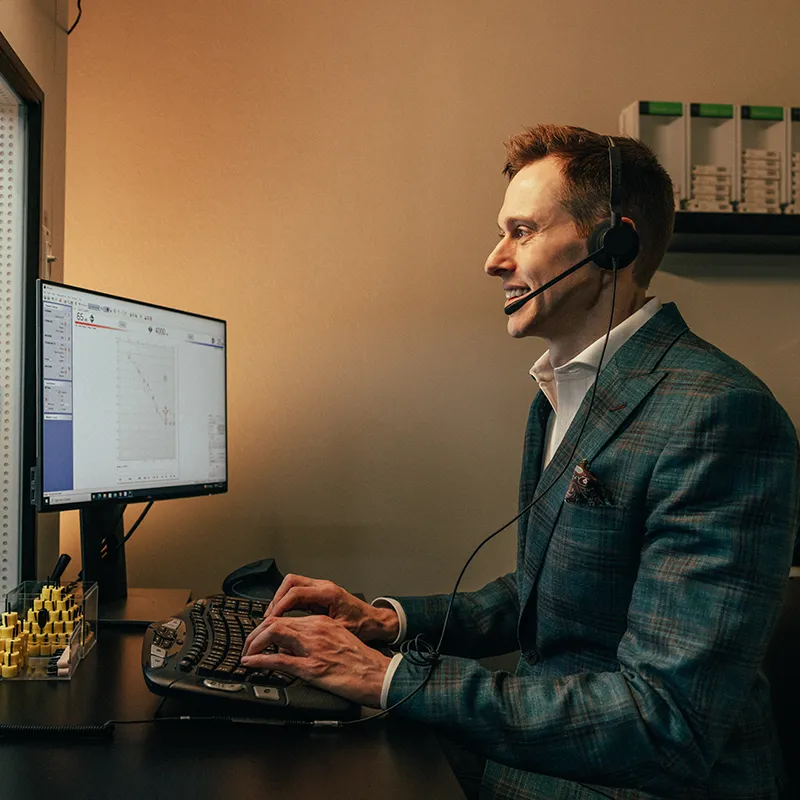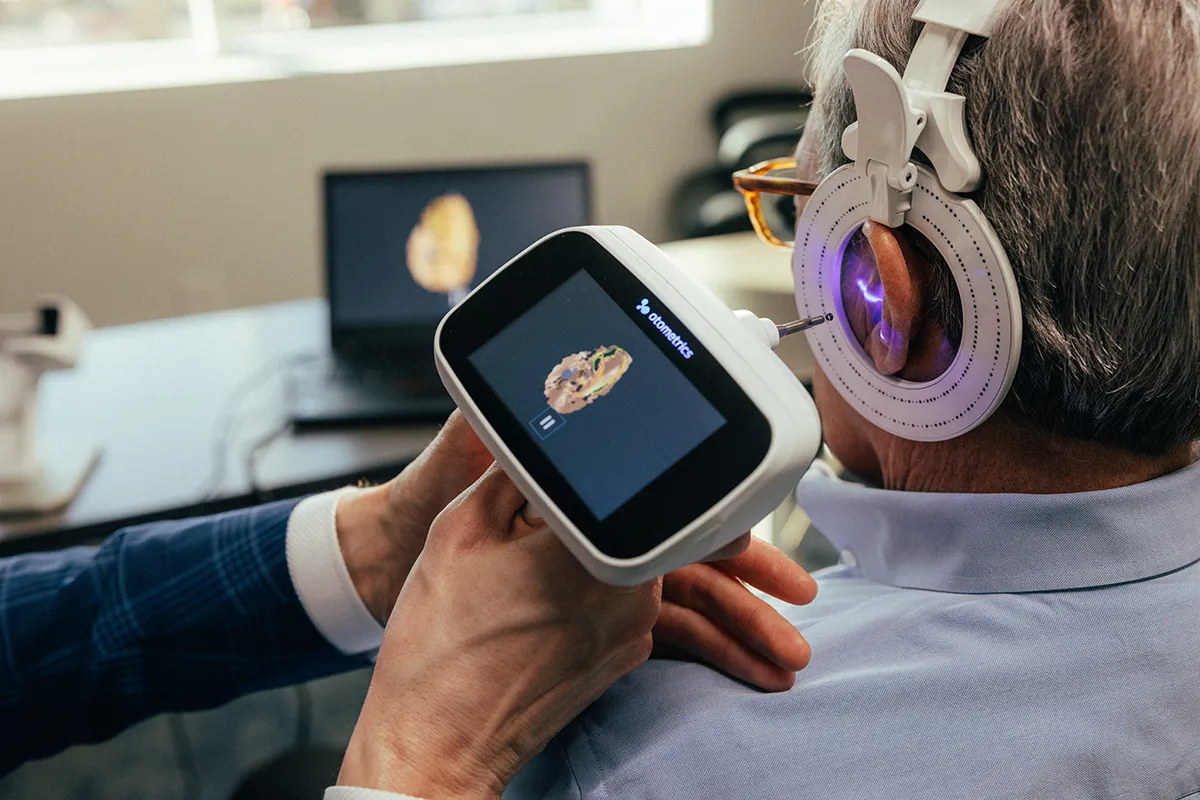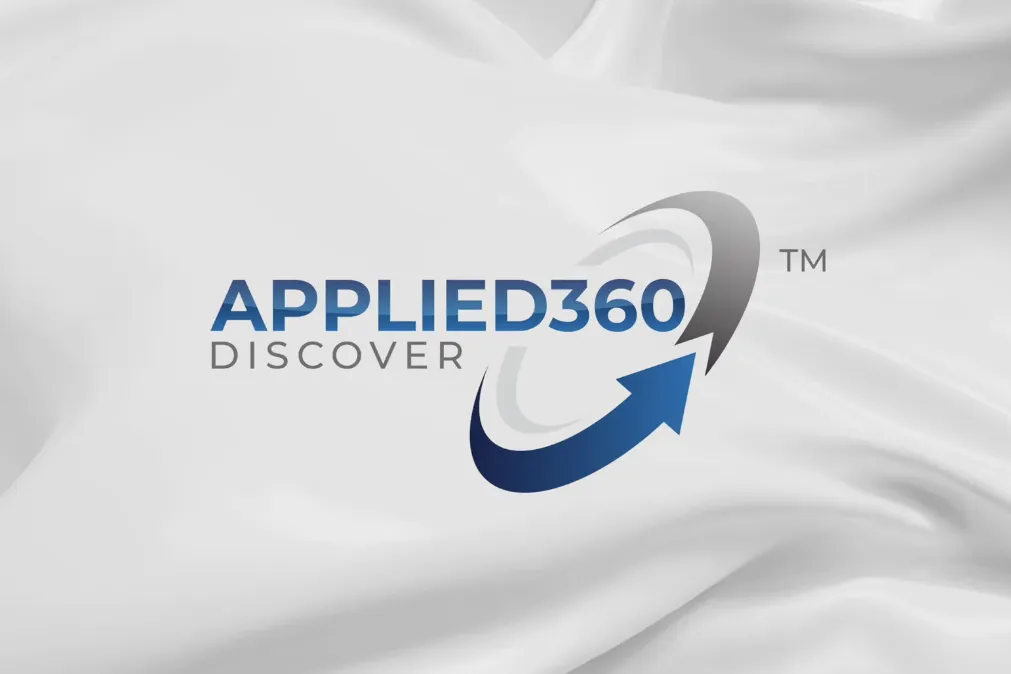What is a Hearing Test?
Not all hearing tests are created equal. The simple hearing screenings you may remember from elementary school only scratch the surface of what a comprehensive hearing evaluation can reveal about your auditory health. At Applied Hearing Solutions, we believe understanding the difference between basic screenings and thorough evaluations is key to getting the hearing care you deserve.
The Difference Between Basic and Comprehensive Hearing Tests
Many people's first experience with hearing testing involves sitting in a nurse's office, raising their hand when they hear beeps through headphones. While these basic screenings can identify obvious hearing loss, they only evaluate your ability to detect sounds at specific frequencies.
A comprehensive hearing evaluation goes far beyond simple beep detection. Your auditory system includes your outer ear, middle ear, inner ear, auditory nerve, and auditory cortex in your brain. Each component plays a role in your ability to hear and understand speech, and each requires specific testing to evaluate properly.

The Eight Components of a Comprehensive Hearing Evaluation
1. Otoscopy
Before any testing begins, we examine your ears using an otoscope to identify anything that might interfere with sound transmission. This includes checking for earwax buildup, foreign objects, or structural abnormalities that could affect your hearing. Our audiologists are skilled in safe ear wax removal using advanced techniques when necessary.
2. Pure Tone Air Conduction Testing
This is the part most people recognize as a "hearing test." You'll sit in a soundproof booth wearing headphones or insert earphones, responding when you hear tones at different frequencies and volumes. Air conduction testing measures how loud sounds need to be before you can barely detect them as they travel through your outer ear, middle ear, and inner ear.
3. Pure Tone Bone Conduction Testing
Instead of sending sound through your entire auditory system, bone conduction testing uses a small device placed on your head to send vibrations directly to your inner ear. This bypasses your outer and middle ear entirely, helping us determine whether hearing loss originates from your outer/middle ear or your inner ear.
4. Tympanometry
When we find differences between air and bone conduction results, tympanometry helps us understand why. This test measures how your eardrum moves when we change air pressure in your ear canal. It can detect fluid in the middle ear, eardrum perforations, or other conditions that may require medical treatment.
5. Speech Reception Threshold Testing
Pure tone testing tells us about your ability to detect sounds, but hearing and understanding are different processes. Speech reception threshold testing uses two-syllable words presented at decreasing volumes to identify the softest level at which you can hear and understand speech. This helps us understand your difficulty with soft talkers.
6. Word Recognition Score Testing
This test presents single-syllable words at a comfortable listening level to evaluate how clearly you understand speech when it's loud enough to hear easily. Even if you can detect sounds normally, you may still have difficulty understanding what's being said. This test helps us identify speech clarity issues.
7. Speech-in-Noise Testing
Your ability to understand speech in quiet environments doesn't predict how well you'll hear in noisy situations. Speech-in-noise testing presents sentences with increasing background noise to determine how much separation you need between speech and noise to understand conversations in challenging environments like restaurants.
8. Tinnitus Pitch and Intensity Matching
If you experience tinnitus (ringing or buzzing in your ears), we can measure its characteristics through pitch and intensity matching. This helps us understand the frequency and loudness of your tinnitus, which is valuable information for developing treatment strategies.
Why Comprehensive Testing Matters
Each test provides specific information about different aspects of your hearing system. Together, they create a complete picture of your auditory health and help us determine the most appropriate treatment options. Some hearing losses require medical intervention, while others respond well to hearing aids or other audiological treatments.


Understanding Your Results
After completing your hearing evaluation, we take time to explain your results in terms you can understand. We'll show you exactly what's causing your hearing difficulties and discuss all available treatment options. This education is a cornerstone of our patient-centered approach to hearing care.

Our Applied360 Discover Consultation
A comprehensive hearing evaluation is just one component of our Applied360 Discover consultation. This 2-hour appointment includes detailed case history, thorough testing, results explanation, and personalized treatment recommendations. We also discuss your hearing priorities and lifestyle needs to ensure any treatment plan fits your specific situation.
During this consultation, we'll also educate you about our Applied360 Fit treatment process if hearing aids are recommended. We believe you should understand every aspect of your hearing health and treatment options before making any decisions

The Real Ear Measurement Difference
If hearing aids are recommended following your evaluation, we use Real Ear Measurement to verify they're programmed correctly to your specific hearing loss prescription. This scientific verification ensures you receive the maximum benefit from your hearing aids, something less than 30% of hearing aid clinics provide. All of this is included as part of our our 360Fit process.
Taking the Next Step
Understanding what happens during a comprehensive hearing evaluation removes the mystery from the process and helps you prepare for your appointment. Whether you're experiencing hearing difficulties for the first time or seeking a second opinion about existing hearing loss, our thorough evaluation process provides the foundation for effective treatment.
If you're ready to understand your hearing health completely, contact us today at (602) 877-0000 to schedule your Applied360 Discover consultation. Our experienced audiologists will guide you through each step of the process and help you make informed decisions about your hearing care.

Recommended Reading
Lorem ipsum dolor sit amet, consectetur adipiscing elit.
Get in touch.
Applied Hearing Solutions
4045 E Union Hills Dr. Suite #D128
Phoenix, AZ 85050




